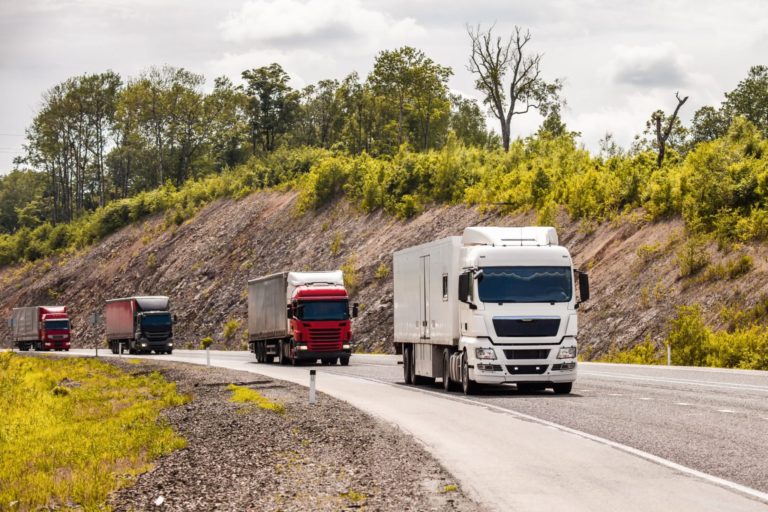Adam Wales, Key Account Manager, Axis Communications, explains how video and sensor technologies are reshaping logistics into a safer, smarter ecosystem that strengthens compliance and deepens customer trust.
The pace of digital transformation (DT) in the logistics industry is accelerating. McKinsey reports that 55% of service providers expect to deploy at least 13 digital use cases within three years, a sharp rise from the 9% hitting that mark today. 85% of logistics firms report added value from DT initiatives, despite the challenges DT still presents.
Data-driven decision making underpins the future of the logistics industry, and video and sensor technologies play a crucial part in the shift from looking back forensically to acting in real time. Every pixel is a sensor, turning video into a continuous stream of actionable data. At the network edge, metadata ties events in the real world to identity and context, empowering immediate, proactive decision making.
Video adds benefits to obvious functions like security, and empowers the less obvious. It’s a way to discover greater operational efficiency, sharper asset protection, and a streamlined, accurate and satisfying customer experience. In the high-risk, high-value environments of ports, warehouses, and distribution hubs, one application stands out as both the most relatable and the most urgent: health and safety. By improving compliance and reducing risk, video and sensor data can drive down insurance costs, boost operational resilience, and protect people – the most valuable asset of all.
Start with being proactive about safety
Logistics environments are inherently complex and potentially hazardous. Forklifts and foot traffic share the same space, heavy goods move constantly, and training levels vary significantly, particularly considering the presence of temporary staff or visitors. Despite mounting compliance requirements, monitoring levels are often inconsistent and reliant on the stretched attention of humans alone. Video analytics help to close this gap.
Through analytics running in-camera or on a VMS, cameras can detect whether proper PPE is being worn, confirming compliance or allowing issues to be addressed immediately. They can recognise both vehicles and people, defining exclusion zones and triggering alerts when the two cross paths in unsafe ways.

Standardised messaging protocols allow cameras to integrate with operational systems – enabling actions such as closing barriers, maintaining red lights, triggering visual or audible alerts, or controlling dynamic messaging and signage, with the camera acting as the catalyst. This represents a proactive approach, shifting health and safety from an arduous box-ticking exercise to a dynamic, data-driven system. Safety goes beyond compliance. It is the clearest proof that data translates into measurable value.
By starting with safety, logistics leaders can demonstrate ROI quickly, secure stakeholder buy-in and build the foundation for broader transformation. Leveraging existing camera infrastructure in a new way keeps deployment complexity low and impact high, enabling organisations to achieve quick, visible results that build momentum for further innovation.
High-impact improvements in the long term
The benefits of video data extend beyond momentary corrections. Each compliance check generates data of its own, helping management to identify recurring issues or persistent problems, target training where it is most needed, and create a cycle and culture of improvement.
Once the impact of cameras on safety is proven, their value expands further. Logistics is not just about moving goods, but doing so reliably, securely, and with minimal disruption. Video and sensor data has a role to play in any DT effort that seeks to improve these metrics.
Video can record the condition of palletised goods as they are unloaded from containers, and again as those goods are dispatched, creating a vital chain of evidence. This can prevent costly write-offs and, by documenting any pre-existing damage, provide the evidence needed to rebut fraudulent claims and demonstrate diligence to customers.
Accessing sustainability benefits
Cameras offer benefits in efficiency and sustainability. In lighting, for example, intelligent analytics can distinguish between people, vehicles and empty space, meaning they outperform traditional motion sensors and can be integrated into a smarter zoned automated lighting setup which cuts bills and carbon footprint without reducing worker safety or comfort.
They can also form a bridge between legacy systems and digital upgrades, transforming analogue gauges and readouts into live, actionable data streams. Instead of relying on manual checks or outdated snapshots, leaders gain continuous visibility into operations. With thresholds and automated alerts in place, even older systems retain their value, contributing to a modern connected logistics environment without forcing an immediate upgrade.
A video-driven future in logistics
Video data is not a bolt-on, it is a cornerstone of the new digital supply chain. Starting small with visible wins like PPE compliance helps to build momentum, and there is a wealth of value to be found when DT initiatives scale up. A connected, intelligent infrastructure transforms risk management, boosts operational efficiency, and cements customer trust.
The benefits are clear, and they compound quickly. Logistics organisations have reported lower insurance premiums after implementing safety analytics like smoke detection, savings of millions in fraudulent missing item claims through order-linked packing evidence, and tangible reductions in mid-mile transportation costs by measuring the fill rate of trucks .
Whatever the need, and wherever DT projects begin, it is vital to build the next generation of logistics technology on a platform that is up to the task. The sharper the footage, the stronger the edge processing and machine learning capabilities, the better the data. Those who see cameras as the intelligence platforms that they are will be the ones to create a smarter, safer world for logistics. This is more than transformation – it’s accountability in action.











